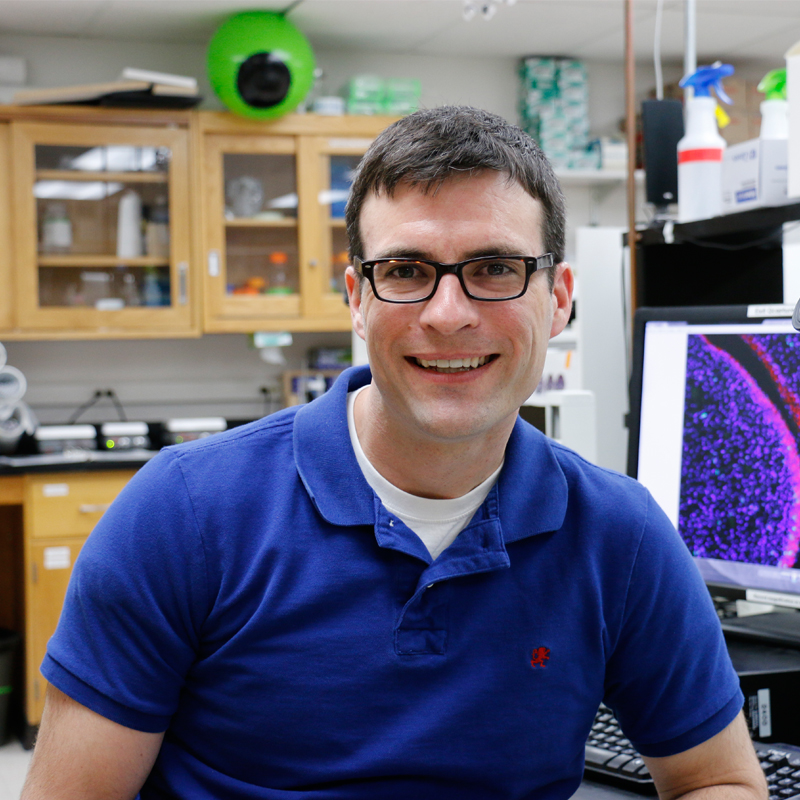Understanding the interaction of genetic and environmental factors will lead to effective prevention strategies
Each year, 7.8 million children are born with serious birth defects, such as cleft lip and palate. These conditions have a significant impact on the affected individual's survival and quality of life, and pose serious familial and societal economic burden. Though prevention strategies hold the most promise for reducing birth defect incidence, they have remained largely elusive because most birth defects result from complex interactions that are difficult to define. Dr. Robert Lipinski, Assistant Professor of Comparative Biosciences at University of Wisconsin-Madison (UW), develops innovative techniques to identify markers in high-risk individuals and develop prevention strategies for common and morbid human birth defects.
Most birth defect are not caused by genetics alone, but by complex interactions of genetic and environmental factors. Dr. Lipinski’s novel holistic research shows that birth defect outcomes are the result of a perfect storm: genetic predispositions overlaid with environmental factors. Unlike genetic factors, environmental causes can be easily avoided once identified. Using innovative screening models, he is identifying specific chemicals and other environmental factors that interact with genetic mutations and contribute to the development of birth defects.
Dr. Lipinski leads a multidisciplinary team that includes a research technician and graduate and undergraduate students. They integrate novel in vitro screening approaches with mouse models that faithfully recapitulate human birth defects. Their collaborations with doctors at the National Institutes of Health and genetic experts at University of Pittsburgh enable Dr. Lipinski and his team to directly translate their innovative findings to patients.
Current research includes:
- Mapping the Interplay Between Predisposing Genetic Mutations and Environmental Effects in Orofacial Development - Dr. Lipinski and his team developed an innovative in vivo model to examine the interaction between genetic and environmental factors that result in birth defects. They identified a specific signaling pathway involved in early development that, when disrupted, causes clefts of the lip and palate, modeling those in affected children. This pathway is sensitive to disruption by several chemicals in the environment, including chemicals in food, dietary supplements, and pesticides. Dr. Lipinski and his team are now examining whether exposure to these compounds during early pregnancy can cause birth defects, particularly in combination with predisposing genetic mutations. Their goal is to develop tailored strategies to prevent birth defects. This begins with identifying specific genetic factors that make some developing embryos ultra-sensitive to particular environmental factors. Then they can reduce the risk of birth defects by advising women to avoid these environmental influences during specific times in their pregnancy.
- Engineering a Biological Model that Allows for Rapid Screening of Environmental and Genetic Insults - Genetic variation and environmental factors play major roles in development, but with both groups numbering in the tens of thousands, traditional research approaches are woefully inadequate. Directly addressing this major gap, Dr. Lipinski and his team are working with biomedical engineers to develop a microphysiological model that replicates the critical molecular and cellular events of lip and palate development. Occupying only the space of the period at the end of this sentence, these tiny cell cultures can be produced rapidly and used to screen thousands of genes and environmental factors simultaneously.
To learn more, please visit Dr. Lipinski’s website at http://www.vetmed.wisc.edu/lab/lipinski/.
Bio
As a results-driven academic, Dr. Robert Lipinski wanted to work in a field in which he could make a difference and see it translate within his lifetime. He obtained a B.S. in biology and Ph.D. in molecular and environmental toxicology at University of Wisconsin-Madison. He performed his postdoctoral research in embryology and teratology at University of North Carolina at Chapel Hill.
During his graduate studies, Dr. Lipinski was initially drawn to environmental toxicology because he knew it would become increasingly relevant. He grew interested in studying clefts of the lip and palate because of the direct impact these malformations have on the quality of life for children and their families. Despite the prevalence of clefts, what caused them still wasn’t understood.
Environmental toxicology and birth defects involve complicated questions with difficult to solve but important answers. At that time, an idea was emerging that clefts and other birth defects result from a complex interaction of genetic and environmental factors. However, Dr. Lipinski noticed that no one was taking a holistic approach, likely due to a lack in necessary conceptual and experimental tools. He realized that looking at the genetic and environmental sides of the equation together would be required to really understand how birth defects are caused. Dr. Lipinski is motivated by the opportunity to solve complex puzzles, particularly when the answers that he and his team generate can directly translate to improving the health of children.


